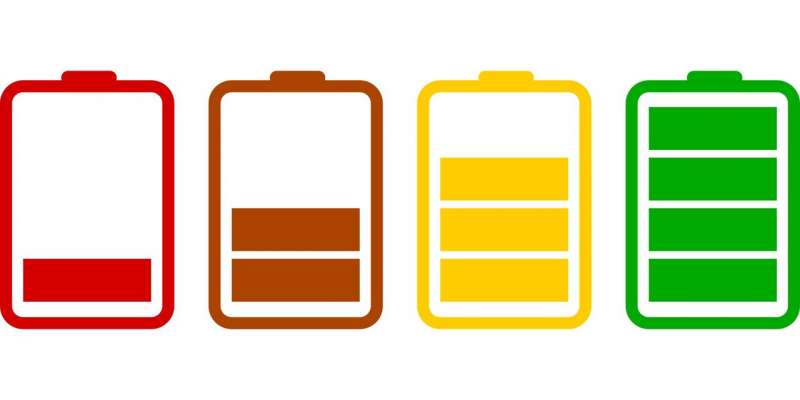
Batteries are a part of everyday
modern life, powering everything from laptops, phones and robot vacuums to
hearing aids, pacemakers and even electric cars. But these batteries
potentially pose safety and environmental risks.
In a study recently published in Cell Reports Physical Science, researchers at Texas A&M University investigated the components of a different kind of battery—a metal-free, water-based battery—which would reduce the flammable nature of standard batteries and decrease the number of metal elements used in their production.
Most batteries are Li-ion and contain lithium and cobalt, which are globally strategic elements, meaning they are located only in certain countries but essential to the global economy and United States battery manufacturing.
"This work enables the future design of metal-free aqueous batteries," said Dr. Jodie Lutkenhaus, professor and Axalta Coating Systems Chair in the Artie McFerrin Department of Chemical Engineering at Texas A&M. "By going metal-free, we can address the pressing global demand for strategic metals used in batteries, and by going aqueous, we replace the flammable volatile electrolyte with water."
Using a very sensitive measurement technique called electrochemical quartz crystal microbalance with dissipation monitoring, researchers were able to determine how electrons, ions and water transfer in the electrode as it is charged and discharged.
"With this information, we showed that enhanced electrode-water interactions lead to improved energy storage performance," she said.
The energy storage capacity was lower than that of traditional Li-ion batteries, but this paves the way for a more sustainable and less volatile battery in the future.
The research is in its initial stages, and there's opportunity for various applications in the real world. One particular potential is implantable batteries for medical devices.
Lutkenhaus' interest began when she learned about the strain on strategic elements such a lithium and cobalt due to increased battery manufacturing.
"By using completely different materials, such as we do with polymers here, we remove metals from the picture completely," she said. "My favorite aspect of this work is our ability to deeply characterize the molecular transport processes associated with this redox polymer. Only in the last few years have we been able to resolve such effects on this time and mass scale."
For the future, Lutkenhaus said they will need to identify more polymers that are compatible with the design.
"One we have that, we can produce a high-performance, full-cell for practical use," she said.

 Previous page
Previous page Back to top
Back to top







